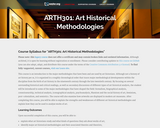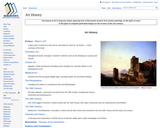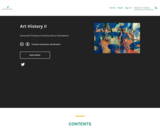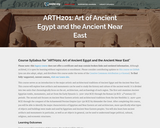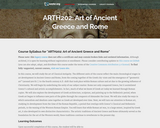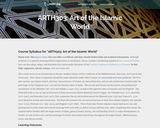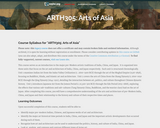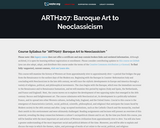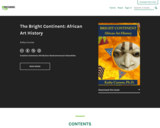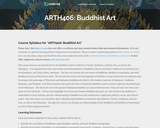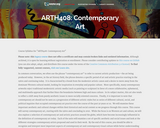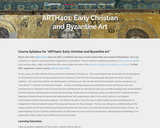SUNY’s “Art History and Appreciation I” that was developed by Lumen Learning.
Module 1: Introduction
Module 1 Overview
Key Learning Items
Common Questions about Dates
A Beginner's Guide to the History of Western Culture
Why Look at Art?
The Skill of Describing
Patronage and the Status of the Artist
Glossary of Art Terms
External Resource
Module 2: The Birth of Art
Module 2 Overview
Key Learning Items
Prehistoric Art: Paleolithic Origins
Nude Woman (Venus of Willendorf)
Paleolithic Art Explained
The Neolithic Revolution
Jericho
Çatal Höyük
Stonehenge
External Resources
Module 3: The Ancient Near East
Module 3 Overview
Key Learning Items
Ancient Near East
Sumerian Art
The Invention of Writing
The Standard of Ur
Ziggurat of Ur
Art of Akkad and Ur
Victory Stele of Naram-Sin
Theories on the Meaning of the Victory Stele of Naram-Sin
Law Code of Hammurabi
Assyrian Art
Lamassu
Neo-Babylonian Art
Art of the Persian Empire
External Resources
Module 4: The Art of Ancient Egypt
Module 4 Overview
Key Learning Items
Ancient Egypt
Egyptian Art
Materials & Techniques
Seated Scribe
The Great Pyramids of Giza
Pyramid of Khufu
Pyramid of Khafre and the Great Sphinx
Pyramid of Menkaure
House Altar (Amarna Period)
Portrait Head of Queen Tiye
Bust of Nefertiti
Ramesses II
External Resources
Module 5: The Art of Ancient Greece—Part I
Module 5 Overview
Key Learning Items
Aegean Prehistoric Archaeology
The Early Aegean (3000–700 BCE)
Geometric Greek Krater
Black Figure Amphora
Niobid Painter, Attic Red Figure Calyx-Krater
New York Kouros
Spear Bearer
The Greek Temple
East and West Pediments, Temple of Aphaia
Myron, Discus Thrower
The Parthenon
Parthenon's East Pediment
Parthenon Frieze
Parthenon Metopes
Erechtheion
External Resources
Module 6: The Art of Ancient Greece—Part II
Module 6 Overview
Key Learning Items
Lysippos: Farnese Herucles
After Praxiteles, Venus
Barberini Faun
Dying Gaul
Nike of Samothrace
The Pergamon Altar
Boxer at Rest
Alexander Mosaic
Laocoön and his Sons
Eros Sleeping and an Old Market Woman
** Petra: An Introduction
Petra: Rock Cut Facades
** Petra: Urban Metropolis
External Resources
Module 7: The Art of the Etruscans
Module 7 Overview
Key Learning Items
Etruscan Art
Sarcophagus of the Spouses
Etruscan Necropolises
Etruscan Art Explained by the Met
External Resources
Module 8: The Art of Ancient Rome—Part I
Module 8 Overview
Key Learning Items
Ancient Rome
Digging Through Time
Temple of Portunus
Veristic Male Portrait
The Pantheon
Augustus of Primaporta
Painted Garden
Head of Augustus
Ara Pacis
Villa of Mysteries
Colosseum
External Resources
Module 9: The Art of Ancient Rome—Part II
Module 9 Overview
Key Learning Items
Arch of Titus
Hadrian's Villa
Maritime Theater, Hadrian's Villa
Pair of Centaurs
Column of Trajan
Medea Sarcophagus
Equestrian Sculpture of Marcus Aurelius
Ludovisi Battle Sarcophagus
Tetrarchs
Arch of Constantine
Colossus of Constantine
External Resources
Module 10: Early Christian Art
Module 10 Overview
Key Learning Items
Introduction to Early Christianity
Early Christian Art
After Constantine
Santa Maria Antiqua Sarcophagus
Santa Pudenziana
Sarcophagus of Junius Bassus
Santa Sabina
Santa Maria Maggiore
Mausoleum of Galla Placidia
External Resources
Module 11: Early Medieval, Carolingian and Ottonian Art
Module 11 Overview
Key Learning Items
Early Medieval Art
Fibulae
Sutton Hoo Ship Burial
Medieval Manuscripts
The Bestiary
The Lindisfarne Gospels
Carolingian Art
Lindau Gospels Cover
St. Michael's Church
External Resources
Module 12: Byzantine Art
Module 12 Overview
Key Learning Items
San Vitale
Iconoclasm
Hagia Sophia
Ivory Panel with Archangel
Icon of Saint George
Icon of the Triumph of Orthodoxy
External Resources
Module 13: The Arts of the Islamic World
Module 13 Overview
Key Learning Items
Introduction to Islamic Art
Mosque Architecture
The Early Period
Dome of the Rock
Great Mosque of Cordoba
Medieval Period
Pyxis of Al-Mughira
The Alhambra
Ilkhanid Mihrab
Later Period
Qa'a: The Damascus Room
External Resources
Module 14: Romanesque Art
Module 14 Overview
Key Learning Items
Introduction to Romanesque Art
Pilgrimage Routes
Church Architecture
Abbaye of Fontenay
Saint Trophime
Last Judgment Tympanum
Virgin from Ger
Historiated Capitals
Painting: Wise and Foolish Virgins
Bayeux Tapestry
Diagram of a Romanesque Portal
External Resources
Module 15: Gothic Art
Module 15 Overview
Key Learning Items
St. Denis
Cathedral of Notre Dame de Chartres
Gothic Architecture
Southwell Minister
Salisbury Cathedral
Blanche of Castile
External Resources
Accompanying Canvas Commons glossary available here: https://lor.instructure.com/resources/70030f3fe62e431fbcb627351302d216 . If the provided link does not work, please search “ASCCC” in Canvas Commons to find all ASCCC OERI resources.
E-book version available here: https://library.achievingthedream.org/herkimerarthistory1/
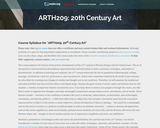
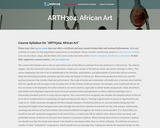
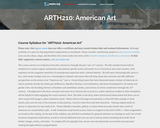

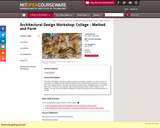
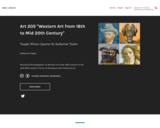
![Art Appreciation Open Educational Resource [Complete Collection of Lessons]](https://img.oercommons.org/160x134/microsite-louis-prod/media/screenshots/82058811b4c343b755c2d9feb4342b9cc0c14b3376641eebb5f91dedc6644eea.png)
